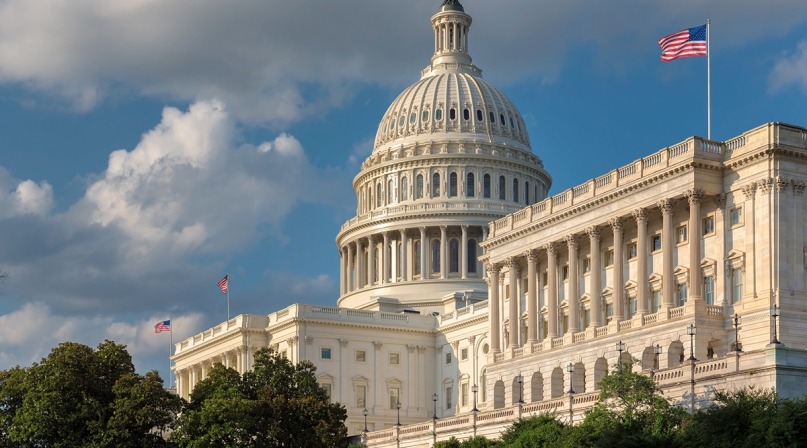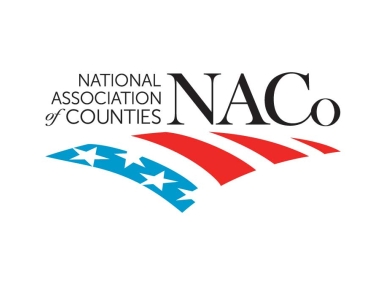Congress votes to end longest federal government shutdown in history
Author

Mark Ritacco

Julia Cortina

Blaire Bryant

Seamus Dowdall

Jared Grigas

Owen Hart

Zeke Lee

Ben Gilsdorf

Brett Mattson

Charlotte Mitchell Duyshart
Upcoming Events
Related News

Key Takeaways
On Nov. 12, the president signed into law a Continuing Resolution and funding package (CR) to end the shutdown of the federal government that began Oct. 1. The CR, which passed out of the U.S. Senate on Nov. 10 and the U.S. House of Representatives on Nov. 12, includes full year Fiscal Year (FY) 2026 funding for three of the twelve appropriations bills, and provides extensions of key agriculture, health, and other programs that expired at the end of FY 2025. The CR funds all other federal agencies at FY 2025 levels through Jan. 30, 2026, setting a new deadline for Congress to pass the remaining nine appropriations bills by that date.
As key intergovernmental partners, counties urge Congress and the Administration to commit to reaching bipartisan agreements on federal appropriations each year by Oct. 1, and to reach a long-term funding agreement for FY 2026 as soon as possible to ensure funding certainty for county governments.
What is in the funding package?
The CR includes the Continuing Appropriations Act of 2026, which extends federal agencies through Jan. 30, 2026, as well as funding for three of twelve appropriations bills. The text is divided into six divisions:
Division A: Continuing Appropriations Act of 2026
- Rescinds recent reductions-in-force (RIF), reestablishing the positions of roughly 4200 federal workers who were laid off in an October RIF.
- Extends of key cybersecurity programs, including continued authorization for the State and Local Cybersecurity Grant Program and the Cybersecurity Information Sharing Act of 2015.
- Prevents sequestration cuts to the Social Services Block Grant, Promoting Safe and Stable Families, and the Maternal, Infant and Early Childhood Home Visiting Program.
- Extends the Essential Air Service (EAS) program through the U.S. Department of Transportation, ensuring that rural counties will continue to benefit from commercial air service.
- Authorizes Wildland Fire Management funding at the U.S. Departments of Agriculture and Interior to be apportioned as needed to continue wildfire suppression efforts.
- Authorizes the use of U.S. Housing and Urban Development (HUD) carryover funds within the Housing Choice Voucher program, to fund renewals of existing rental assistance commitments.
- Establishes a framework for reimbursing states and grantees, including counties, that used their own funds to continue federal programs during the lapse.
Division B: Agriculture, Rural Development, Food and Drug Administration, and Related Agencies Appropriations Act
- Nutrition programs:
- Provides $107 billion in mandatory funding for the Supplemental Nutrition Assistance Program (SNAP), which will sustain the program until September 2026.
- Provides $8.2 billion for the Special Supplemental Nutrition Program for Women, Infants, and Children (WIC).
- Reimburses both the SNAP and WIC contingency reserves to account for expenditures during the government shutdown.
- Rural Development programs:
- Provides $2.7 billion for home loans and rental assistance for rural county residents.
- Provides $1.4 billion for rural water and wastewater infrastructure grants and loans.
- Provides $1.8 billion for rural business development programs.
- Includes $50 million for the Rural eConnectivity (ReConnect) Program, which provides grant funding to deliver broadband infrastructure funding at 100 Mbps / 20 Mbps.
- Includes $17 million for the Community Connect Grant Program, a county-eligible grant program to support economic development goals through the construction of high-speed broadband networks.
- Farm and Conservation programs:
- Provides $1.4 billion for farm safety net programs administered by the Farm Service Agency (FSA).
- Provides $850 million for Natural Resource Conservation Service conservation programs.
- Prohibits the closure of FSA county offices.
- Closes the “hemp loophole” by removing intoxicating hemp-derived products from the legal definition of hemp under federal law, ending the legal ambiguity that allowed synthetic cannabinoids and high-THC hemp products to be sold as “hemp” and exempt from federal drug control.
Division C: Legislative Branch Appropriations Act
- Provides funding for general operations of Congress and includes enhanced funding for member security as well as a continuation of the Member pay freeze, which has been in place since 2009.
Division D: Military Construction, Veterans Affairs, and Related Agencies Appropriations Act
- Includes $660 million for the Supportive Services for Veteran Families (SSVF) program, which provides case management and support to unhoused veterans or veterans at risk of becoming unhoused.
- Includes $702 million for HUD’s Veterans Affairs Supportive Housing (VASH) program, which is a collaborative program that pairs HUD’s Housing Choice Voucher program with VA’s case management and support services.
- Includes $698 million for suicide prevention outreach efforts, including funding for the Veterans Crisis Line.
- Includes $2 million for implementation of Section 302 of the Elizabeth Dole Act, which seeks to improve outreach to veterans about the availability of benefits and empower county veteran service offices.
Division E: Extension of Agricultural Programs
- Extends programs authorized by the 2018 Farm Bill through September 30, 2026.
Division F: Health Extenders
- Reauthorizes mandatory funding for key local health safety net programs to include community health centers ($1.42 billion), the National Health Service Corps (15.3 million), and Teaching Health Centers that operate Graduate Medical Education programs ($58.5 million) through January 30, 2026.
- Extends access to enhanced supplemental payments to county hospitals serving individuals who are low-income, indigent or uninsured by delaying Medicaid Disproportionate Share Hospital (DSH) payment reductions until January 31, 2026. The reduction schedule was also adjusted to extend through FY 2028. Additionally, $17.75 million in DSH allotments was provided to Tennessee to support FY 2026 uncompensated care costs.
Related News

County Countdown – Dec. 15, 2025
Every other week, NACo's County Countdown reviews top federal policy advocacy items with an eye towards counties and the intergovernmental partnership.

County Countdown – Dec. 1, 2025
Every other week, NACo's County Countdown reviews top federal policy advocacy items with an eye towards counties and the intergovernmental partnership.

Counties Celebrate Key Permitting Inclusions in SPEED Act
NACo issued the following statement in response to the passage of the Standardizing Permitting and Expediting Economic Development (SPEED) Act (H.R. 4776), which advanced out of the U.S. House Committee on Natural Resources on November 20.